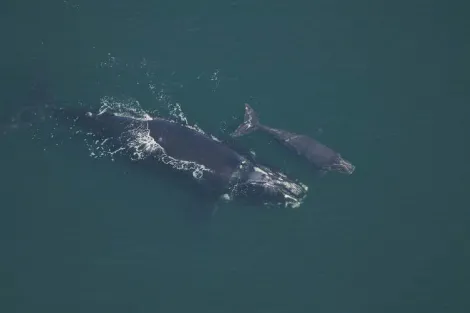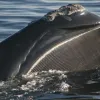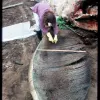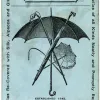Phoenix swimming with her calf in February 2007 in the Southeast calving grounds off the coasts of Georgia and Florida. Researchers track these highly endangered whales (there are only about 450 of them left) very closely and use their skin markings to confirm sightings. The New England Aquarium keeps the catalog that records the life stories of these whales. Phoenix, a model of whom greets visitors in the Sant Ocean Hall at the Smithsonian's National Museum of Natural History, has lived an extraordinary life and apparently is still thriving. More about the right whale can be found in our Tale of a Whale featured story.
Baleen: From Whales to People
For being so big, right whales eat very small food, which they catch using baleen. Baleen is the series of fringed plates hanging in right whales' mouths that are used to strain seawater for food. Until the early 1900's, right whales were heavily hunted primarily for their fatty blubber, which could be burned in oil lamps or made into soap. But whalers also brought baleen along in their catch, which could be used in a number of human products. Learn more about how whales use baleen and how it was once used by people in this slideshow.
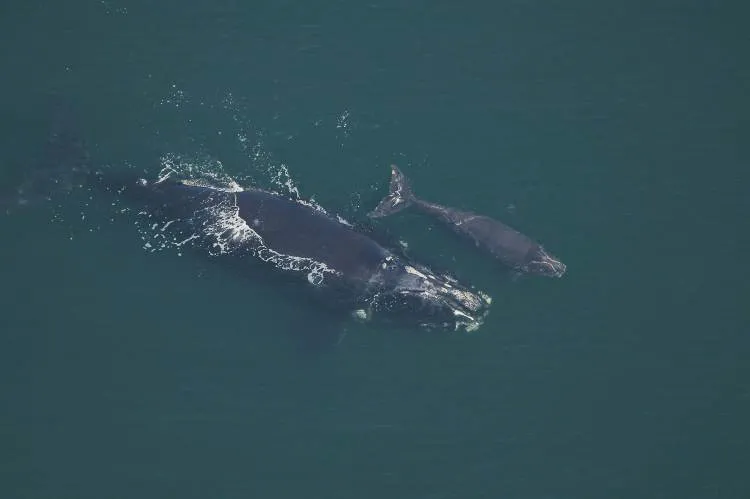
A Right Whale Named Phoenix
Credit: New England Aquarium, Photographer Jessica Taylor
Right Whale Baleen
Credit: ©Mason Weinrich, Whale Center of New EnglandA right whale opens its mouth wide, revealing huge plates of baleen hanging from its upper jaw. There are between 200 and 270 baleen plates on each side of a right whale's upper jaw. They work like a giant sieve to catch the whale's food. Strong but flexible, baleen is made of the same substance as your fingernails - keratin.
Discover more about this species in A Tale of A Whale, a photo essay about a whale named Phoenix.
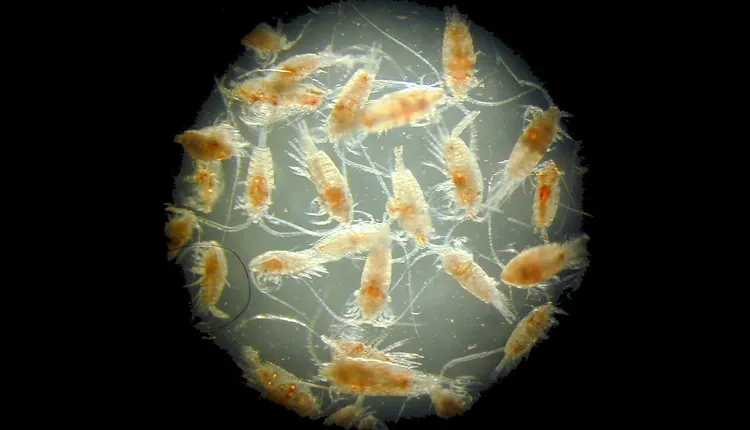
Copepods: Right Whale Food
Credit: Mark Baumgartner/Woods Hole Oceanographic InstitutionThis magnified photo provides a close-up look at copepods—tiny crustaceans that right whales feed on. There are many species of copepods that live throughout the water column, from floating at the surface to buried at the bottom of the sea. They are very small so right whales need to eat a lot of them to get enough energy: scientist estimate that they eat more than 2,000 pounds of copepods and other tiny food each day! More about the right whale can be found in our Tale of a Whale featured story.

Whale Baleen from a Dead Whale
Credit: New England Aquarium, Photographer Philip HamiltonWhalers hunted right whales for their blubber, which could be turned into oil to burn in lamps or make soap, and their baleen. Baleen is the series of fringed plates hanging in their mouths that they use to strain the seawater for food. Baleen was used in a number of consumer products, such as corsets. Here, a researcher examines the baleen from a whale that washed up on the beach. More about the right whale can be found in our Tale of a Whale featured story.
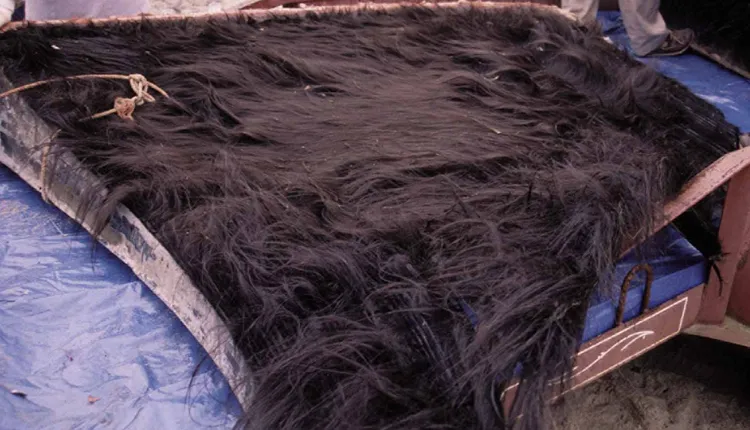
Baleen Close Up
Credit: Michael Moore/ Woods Hole Oceanographic InstitutionThis may look like a mane of hair, but it’s actually baleen from a North Atlantic Right Whale. Although it looks soft and furry, dried baleen is quite stiff, which made it useful for creating structure in a number of consumer products, including whips and umbrellas. Discover more about this species in A Tale of A Whale a photo essay about a whale named Phoenix.
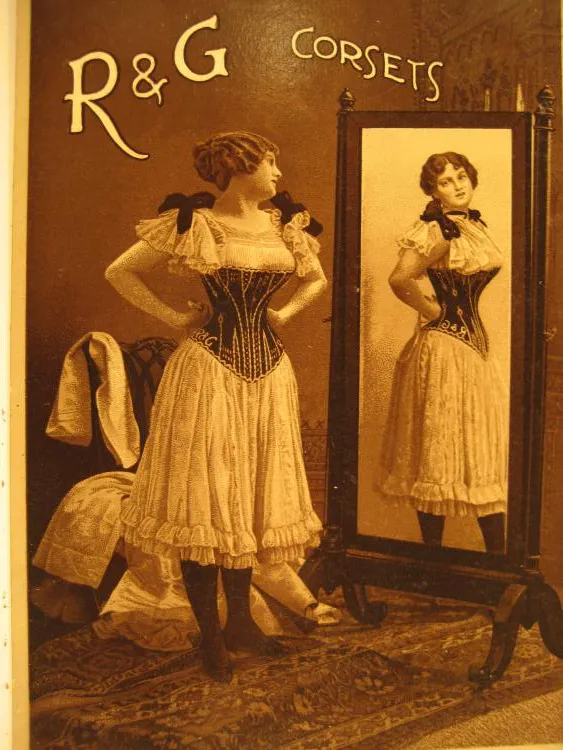
Whale Products in Fashion
Credit: Warshaw Collection of Business Americana, Archives Center, National Museum of American History, SmithsonianIn the 19th century, "whalebone" was an important fashion tool—however, it wasn't made out of bone, but whale baleen. Dried baleen was flexible yet strong, and used to create structure in clothing, such as tight corsets, used by high-fashion women to present a curvy waistline, collars and hooped frames for skirts. Other products that used baleen included umbrella ribs, riding crops, buggy whips, and hat brims. More about whales can be found in our Tale of a whale featured story.

Ad for Whale Baleen Umbrellas
Credit: Warshaw Collection of Business Americana, Archives Center, National Museum of American History, Smithsonian InstitutionWhale baleen, the stiff bristly mouthparts that sieve small prey from the water, was strong yet flexible, and was used to provide structure in many human products, including umbrellas, corsets, and whips. Right whales were easy, lucrative prey. However, it's not used anymore: this species is endangered, and hunting has been banned since 1935. Learn more about right whales in the Ocean Portal's Right Whale Section


